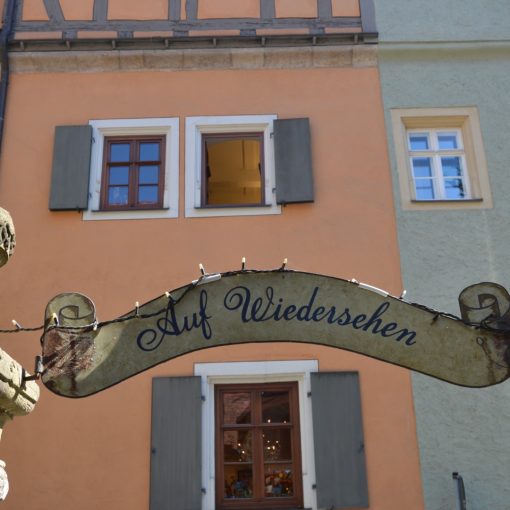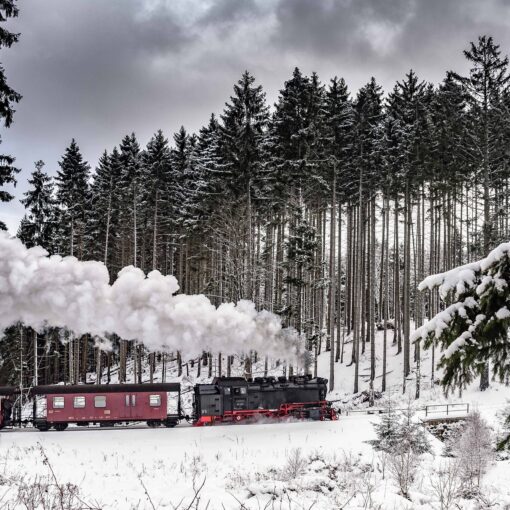[This post may contain affiliate links where we earn a small commission. Please see our disclosure for more information and thank you for supporting our site so we can continue to bring you awesome content for your travel inspiration!]
Train travel in Germany is one of my favorite and preferred ways of travel in Germany and getting around. In true German fashion, the trains are almost ALWAYS on time (after all, one minute late is LATE!), they are clean, comfortable, and after you know a few ins and outs, they are actually extremely easy and straightforward to use.
This “How To Travel By Train in Germany Comprehensive Guide” is going to walk you step by step through everything you’ll need to know about the Deutsche Bahn train system in Germany. I’ll explain the differences of the train types in Germany, compare the Eurail vs the German Rail tickets, show you exactly where and how to buy train tickets in Germany, and give you tried and true tips on how to make your rail travel on the Germany railway stressfree, affordable, and fun!
However, because there is just SO much information, I have decided to give you all the ESSENTIAL info and details here, in this German Train Tickets Explained article, but have sectioned it out into further posts if you would like to dive deeper into a particular topic and get all the nitty gritty details, like how to book a child’s ticket, or buying a German Rail Pass. And, as always, you can use the Table of Contents to jump around to the sections that you need most.
Tip: You may see the letters “DB” or something like “DB Trains.” DB stands for Deutsche Bahn and is often used interchangeably.
See What Offers And Deals Deutsche Bahn Is Offering Right Now
You Might Also Be Interested in Reading:
- What is the Germany Rail Pass and Is it Worth It?
- Step By Step Tutorial On Buying German Train Tickets (Online, in the App, and In Person)
- Germany by Train With Kids
Types of Trains in Germany
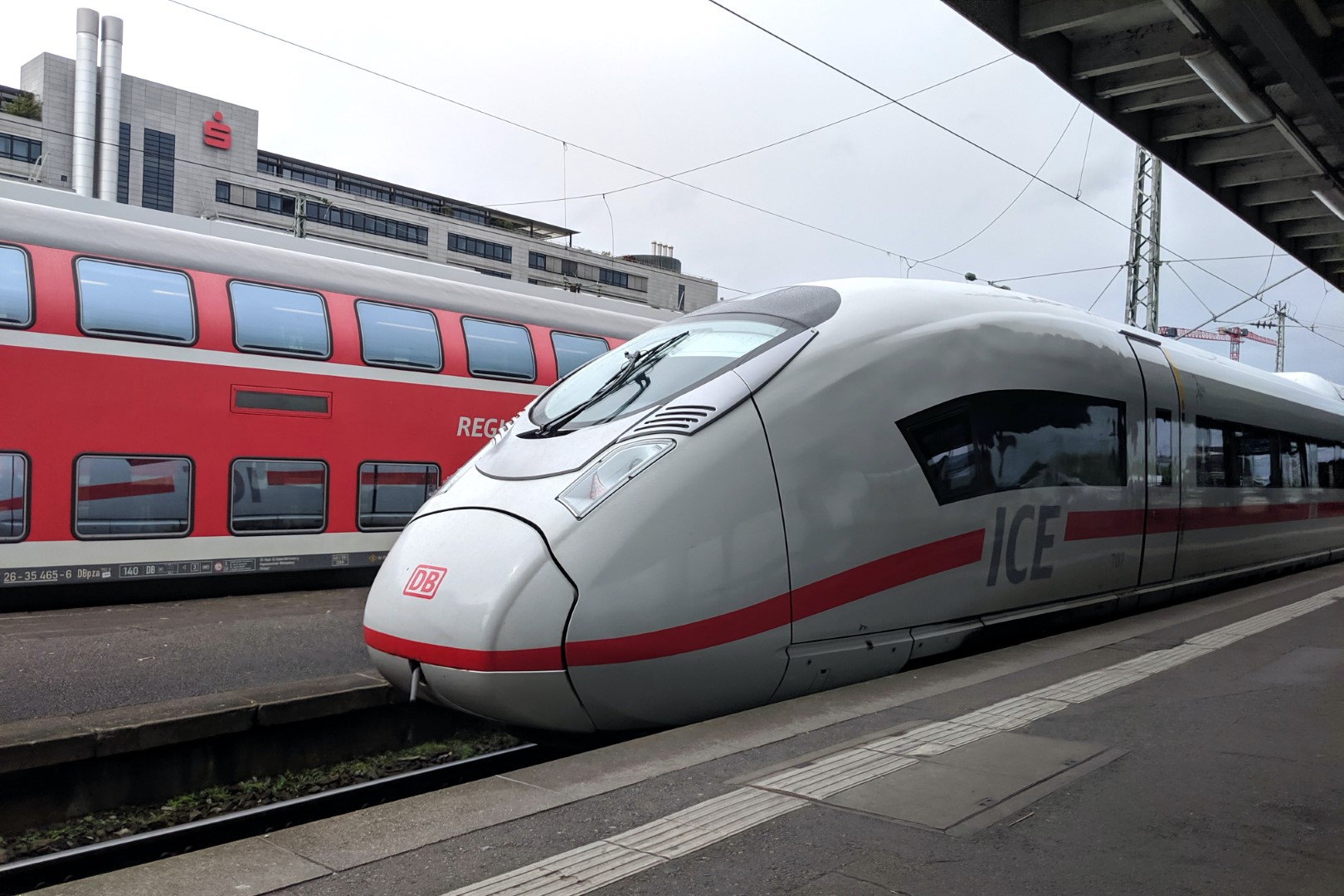
I want to start with describing the different German trains because this will sometimes influence the tickets you will get (and will help you understand the types of tickets when we get to that as well)
While there are many different kinds of trains in Germany, a quick way to (usually) discern between the two main types of trains in Germany is simply by their color.
- Red means local trains in Germany
- White means Long Distance
This is actually important to remember, because we’ll talk later on about certain train fares that only permit travel on the local trains in Germany, like the Bayern Pass.
Long Distance Trains
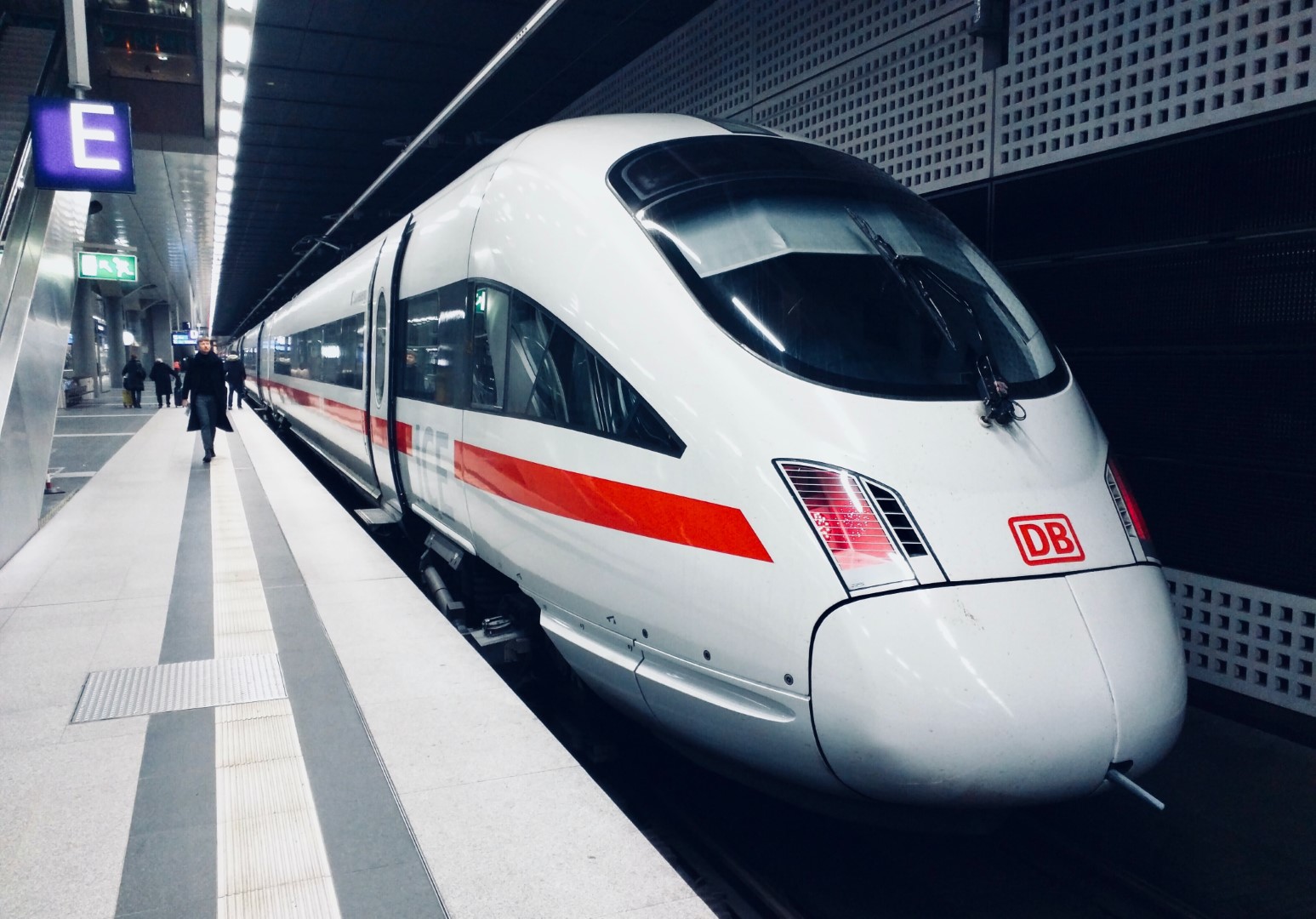
ICE Trains
The long distance trains in Germany are the ICE trains, which means “Inter City Express” and are some of the most well known German trains because of their speed (upwards of 300 kmh/ 180 mph), efficiency, and comfort.
The ICE train in Germany (said like I.C.E, not the word “Ice”) can jet you around to most major cities within Germany in just a matter of hours! For example, the ICE Berlin to Munich train gets you to your destination in just under 4 hours.
IC Trains
Quite similar to the ICE trains, the “Inter City” trains are still long distance trains, just not AS fast (hence the lack of the word “express”). They can still travel upwards of 200 kmh though, so they aren’t necessarily slow! The IC trains often travel on the same lines as the ICE but may make a few more stops at some additional towns along the way.
EC Trains
EC trains stand for “Euro City.” These are essentially like the DB IC trains, where they are long distance, but these ones may cross borders. For example, you may travel on an EC Munich to Salzburg train.
Germany Regional Trains
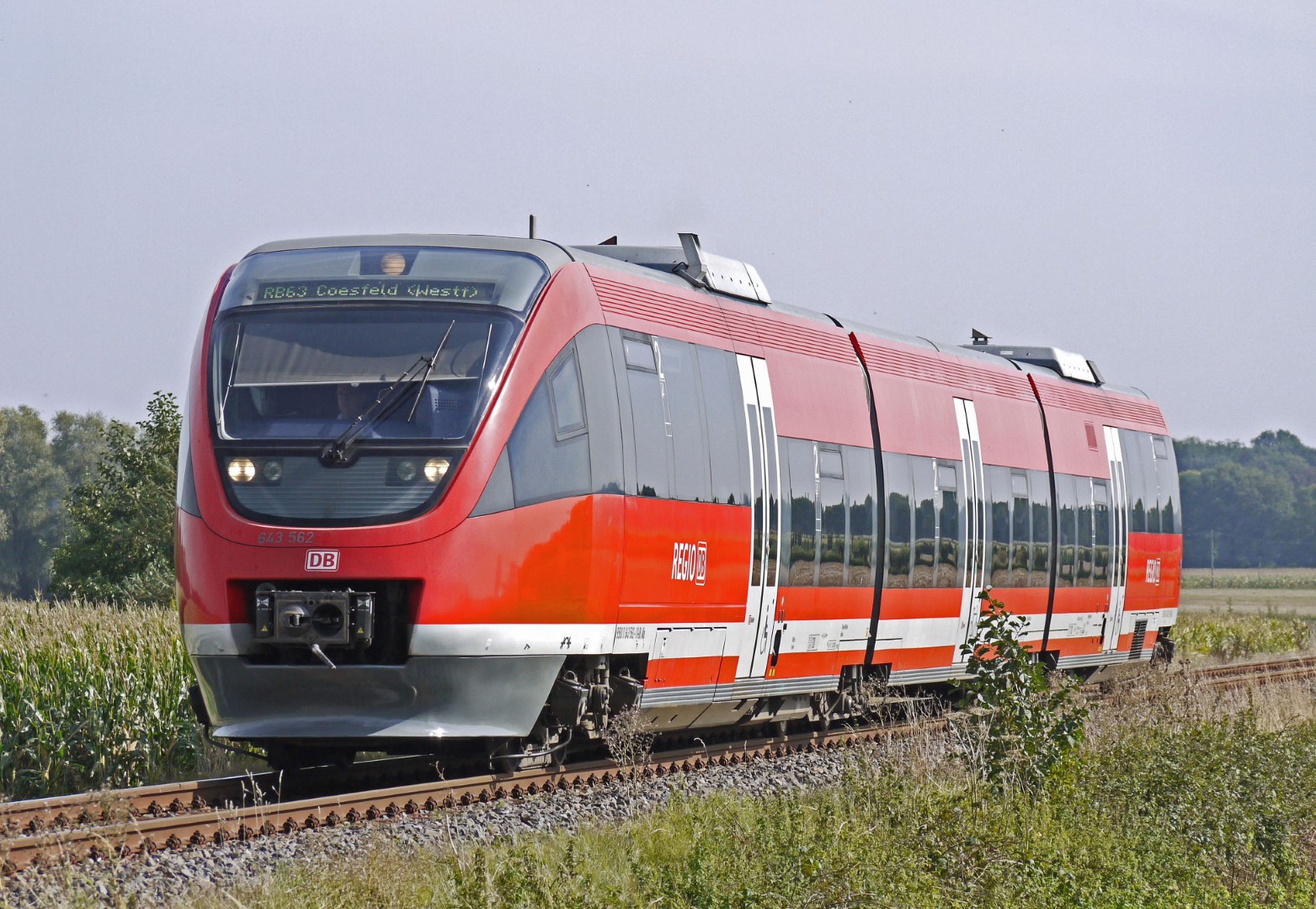
RE Train
The RE train stands for “Regional Express” which is a local (regional) train that goes to smaller towns and villages. As an “Express” train, these trains are still quite efficient at traveling around Germany quickly.
RB Trains
The RB train stands for “Regional Bahn.” This is extremely similar to the RE train, but goes just a tad bit slower and not quite as far as the RE trains do. Oftentimes, these have the same routes as the RE trains but might make more stops at smaller villages that the RE train doesn’t service.
For example, where I used to live in Parsberg, a small Bavarian village, I would take either the RE or RB trains to go to Regensburg. The RE only made about 1 or 2 stops along the way, where the RB made closer to 5, at some of the smaller villages along the same track.
You can almost think of the RE train as the local ICE train and the RB train as the local IC train.
Other Regional Trains
There are often other trains that are operated by private companies. For example, you may see a train that says “Metronon” or “AG.” These trains can still be booked just like any other regional trains (ie at Bahn.com or with the App, etc)
Night Trains
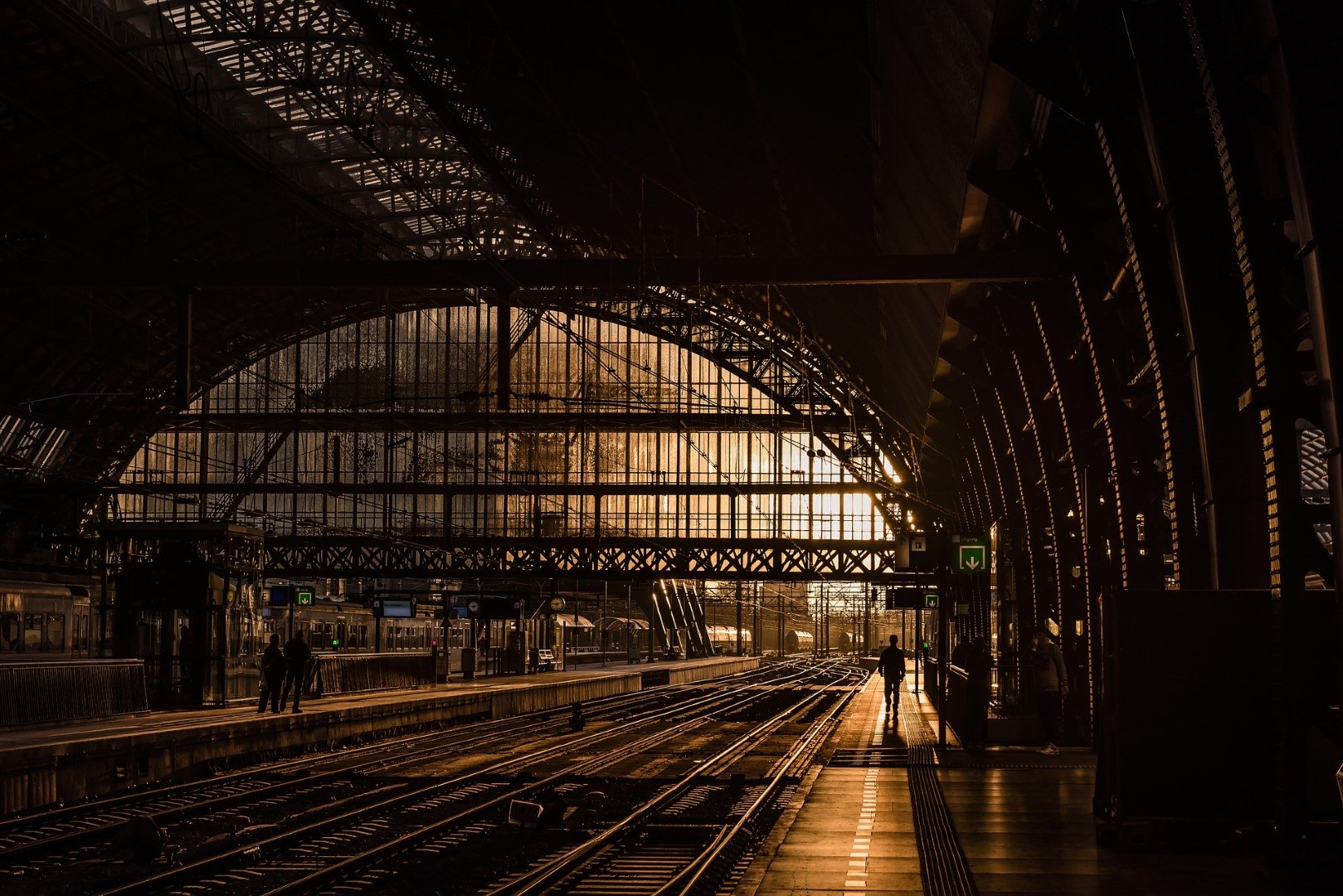
Night trains can be a great option when traveling long distances. These routes typically run on the ICE, IC, and EC trains.
Tip: When we did the night train in Germany, we chose the normal 6 person berth compartment. BAD DECISION! First, we were cramped in a hot compartment with 6 people. Second, because you are in there with a full room, you can’t pull the seats out to lay down on, so you have to attempt to sleep sitting up, similar to on a plane. Finally, every time the train comes to a new stop, the conductor has to come through each compartment and check for new travelers to validate tickets. That means being woken up constantly by people coming in and out!
Therefore, if you plan on taking a night train, I can’t recommend just booking a sleeper car enough. Believe me, it is a few extra euros well spent!!
Sbahn and Ubahn Trains
In many big cities in Germany, you will also see Sbahn and Ubahns. If you buy a “Land Ticket” (see below) then local transportation, such as the S-bahns, are covered in your ticket price. However, if you buy a Saver or Flex ticket, typically that does not also include the local transportation as well.
- An S-bahn stands for “Schnell Bahn” and is a Suburban Train. The S-Bahn can go both above and underground the city.
- An U-Bahn is an “Underground Train” which is like a Subway and is all underground the city center, which is often faster, especially if going across town.
German Train Fares
There are so many different types of German rail tickets to choose from, so it can seem really overwhelming figuring out which is the best for you. If you are a tourist traveling in Germany, here are some of the most common DB train passes and tickets to consider.
Flex and Saver Fare Tickets
If you are going to just be traveling a few times on the DB trains, then looking for individual tickets may be your best option. I use this option a lot when I am just booking one-off tickets or round-trip tickets occasionally. If you are planning on a ton of train travel in Germany, I would NOT recommend this type of DB ticket.
Below I’ll walk you through exactly how to book a ticket, but for now, know that as you go through the booking process you’ll see these two ticket options:
Flex Fare DB Tickets (Flexpreis):
This ticket is going to be slightly more expensive than the saver fare because it allows for, well, more flexibility! The Flex ticket allows you to choose your train, your destination, your times, etc without needing to specify it on the ticket. What that means is that if you know you want to leave on October 12th, but have a city tour in the morning, but you don’t know exactly what time you’ll make it to the train station, this ticket allows for the flexibility to grab whatever train is running closest to the time that you simply arrive at the German train station.
With the flex ticket, you can also hop on and off at stopovers along the route if you so choose, since your ticket is not tied to a certain time or train For example, if you are traveling from Nuremberg to Munich and when your train stops in Regensburg you realize how beautiful it looks, you can hop off and go explore for a bit, come back at a later time and continue on to Munich when you so please!
Saver (Sparen) Tickets
These tickets are going to be cheaper than the Flexpreis DB Tickets. When you go to book, you will need to specify exactly what time you want for departure and will book a specific train.
Tip: If you have the BahnCard 25 and 50 you actually can save 25% on Saver Tickets (more on the BahnCard below)
Booking Tickets FAQS:
How Far in Advance Can You Book Deutsche Bahn Train Tickets?
DB releases tickets for purchase 180 days in advance (about 6 months).
When Is the Best Time to Book Deutsche Bahb Train Tickets for Savings?
Many people will say that around 3 months before departure, you might see some good deals, but I find this hit or miss. These prices will adjust according to demand, so if it is peak travel season/times, you might actually be better off booking in advance. I also find that last minute bookings are typically much more expensive than if you were to book 3 months out.
Regional Land Tickets (Länder-Ticket)
One of my biggest tips to travelers is to first look into a “Land Ticket” first. These tickets are just for one particular state per ticket. For example, we use the Bayern Ticket all the time and it takes us anywhere we want to go in, well, Bavaria!
Here are the different states that offer their own regional tickets:
- Brandenburg-Berlin-Ticket
- Hessen Ticket
- Niedersachsen-Ticket
- Schleswig-Holstein-Ticket
- Sachsen-Ticket
- Thüringen-Ticket
- Sachsen-Anhalt-Ticket
- Saarland-Ticket
- Stadt Land Meer Ticket
- Rheinland-Pfalz-Ticket
- Bayern Pass
- Mecklenburg-Vorpommern-Ticket
See The Details and Prices on the Regional Tickets on the DB Site Here
Each state of Germany is going to have slightly different “rules” and the prices vary, but in general, here is what to roughly expect from a “Land Ticket”:
- These are Day Passes that are good from 9am-3am the following morning. If it is the weekend or a public holiday, then you can start using the ticket at any time in the morning.
- The tickets are good for almost all regional public transportation (that includes regional trains, S-Bahns, U-Bahns, trams, buses) in that German State but does EXCLUDE long distance trains, such as ICE, IC and EC trains.
- You can have up to 4 or 5 people on a ticket (Depending on which State/ Region ticket you need) which is a huge money saver for groups and families.
- Prices start as low as 24 Euro and then you add roughly between 6-8 Euro per next person up until the 4 or 5 person max is met.
- Again, each Region has slightly differing pricing, but here are a few quick examples:
- Bayern Pass: Starts at €25 plus EUR 7 per extra passenger (max. 5 total) for second class tickets
- Brandenburg-Berlin Pass: €33 for up to 5 passengers
- Baden-Württemberg-Ticket: Starts at €24 plus 7 per extra passenger (max. 5 total) for second class tickets
Some examples of how to use these tickets would be:
- Bayern Pass: Travel from Munich to Neuschwanstein Castle starting at 25 Euro
- Saxony Pass: Take the train from Dresden to Konigstein to the stunning Bastei bridge starting at 24 Euro
- Baden-Württemberg-Ticket: Take the train from Stuttgart to Lake Constance starting at 24 EUR
Quer-Durch-Land Ticket/ German Day Ticket
Click Here To See the German Day Ticket
The DB Germany Day Ticket is extremely similar to the above “Land Tickets” except that it covers all of Germany by train. This may sound like a fantastic steal, except remember you are limited to Regional Trains, which are slower than ICE. For example, on an ICE train from Munich to Frankfurt, it normally only takes about 3 hours/45 minutes but on the regional trains, it can be closer to 6 hours.
- Ticket good for up to 5 people
- Starts at 42 Euro for one ticket. Add 7 Euro for each additional passenger (up to 5)
- Valid Mon-Fri 9am-3am the following day. Saturday/ Sunday Midnight-3am the following day
View the Quer-Durch Land Ticket Here
The German Rail Pass
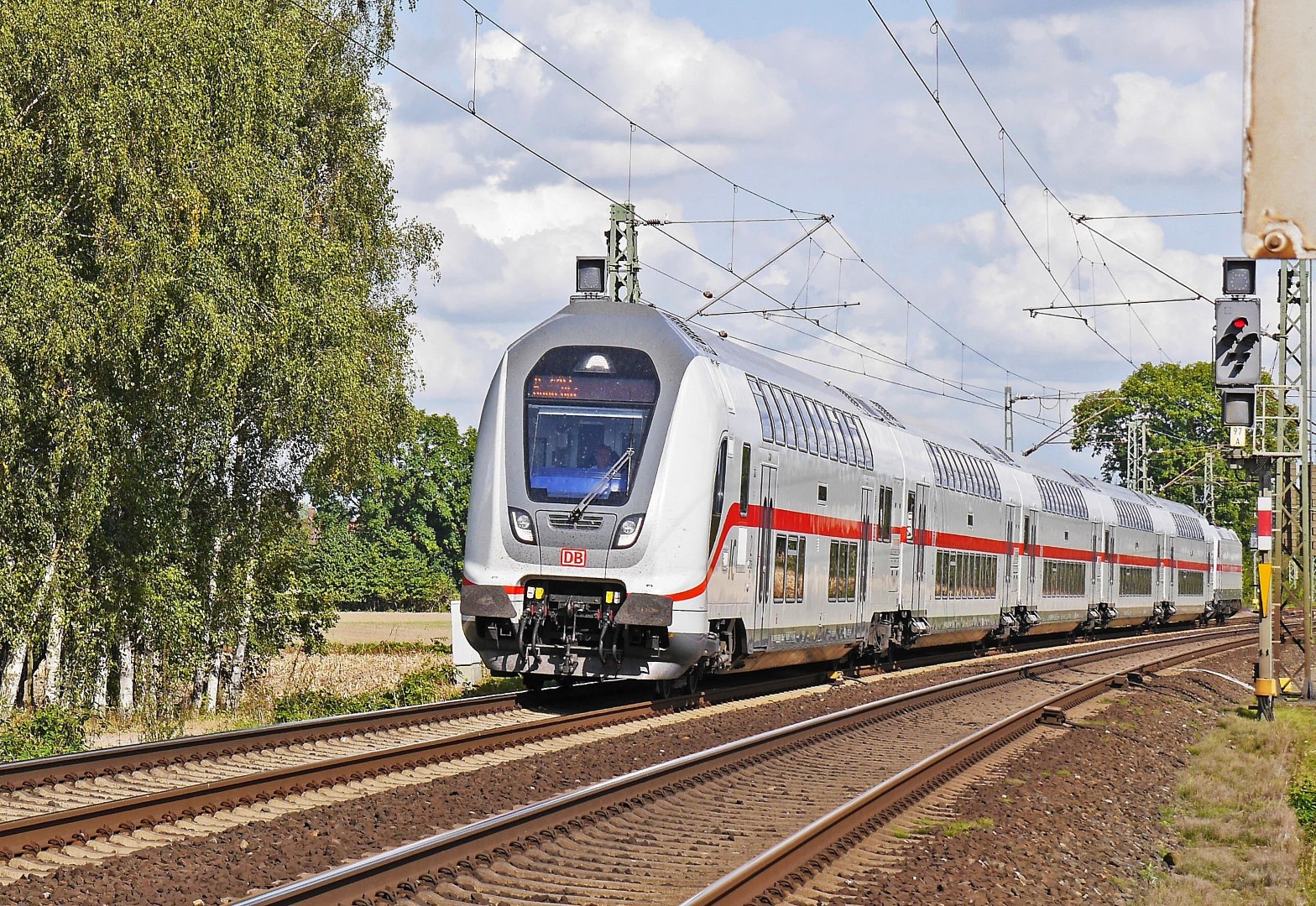
The German Rail Pass Ticket is a flat rate ticket that covers unlimited train travel within Germany and you can choose differing tickets that allows you to book anywhere from 4-10 train tickets within one month. This is particularly good for people doing longer trips and are using the Deutsche Bahn trains as a frequent mode of transportation between further locations.
The ticket covers all ICE, IC, RB, and RE trains. However, this pass does NOT include local transportation, such as local buses, S-Bahns, etc, so when you start to calculate the total cost of transportation, you need to take this into consideration.
A frequently confused ticket with the Deutsche Bahn German Rail Pass is the Eurail Pass. Simply put, the DB Rail Pass is for people who are not European residents (IE: Coming from America) and the Eurail Pass is for Europeans.
There is also the Interrail Pass, which gives you a set amount of days, but is good for numerous countries.
So, which one of the train passes is the best one for you? I cover all three of these train passes in detail in my European Rail Pass vs German Train Pass vs Interrail Pass Guide.
Is the German Rail Pass worth it?
If you are traveling long distances in Germany for more than 4 days in a month, then yes, the DB Rail Pass can absolutely be worth it.
Deutsche Bahn Discount Cards
Another really great option for someone who is planning on using the trains extensively while in Germany is to look into the BahnCard Discounts. The way it works is you pay for a discount card up front and then for every Saver or Flexible ticket you buy, you get that percentage off of the ticket. These are great options for people living in Germany and wanting to save money on frequent train travel in Germany.
- The prices listed here are for the normal BahnCards. However, there are several different options, including ones for 26 years and younger (great for young, Backpackers in Germany), seniors, etc. See all of the options here
For example, if I got the Bahn 50 Card, then I would pay a flat rate upfront (220 Euro for a whole year) and then for every Saver and Flex DB ticket I buy within that year, each ticket would be 50% off.
Click Here To See the BahnCard Options
There are several DB Discount Card Options that all use the same methodology as described above:
- Bahn25: €55.70/ year and get 25% off all Saver and Flex Tickets. Great for the occasional traveler
- Bahn50: €220 / year and get 50% off all Saver and Flex Tickets. Ideal for regular travelers
- Bahn100: €4,027/ year and get 100% off all Saver and Flex Tickets. Perfect for frequent travelers
NEW: Trial Deutsche Bahn Discount Tickets (great option for people visiting Germany)
This is a fantastic option for short term travelers as you can choose a trial period of only 3 months for any of the above mentioned Discount Cards. Prices start at only €17.90!
See The Different BahnCard Discounts Here
Booking Train Tickets in Germany
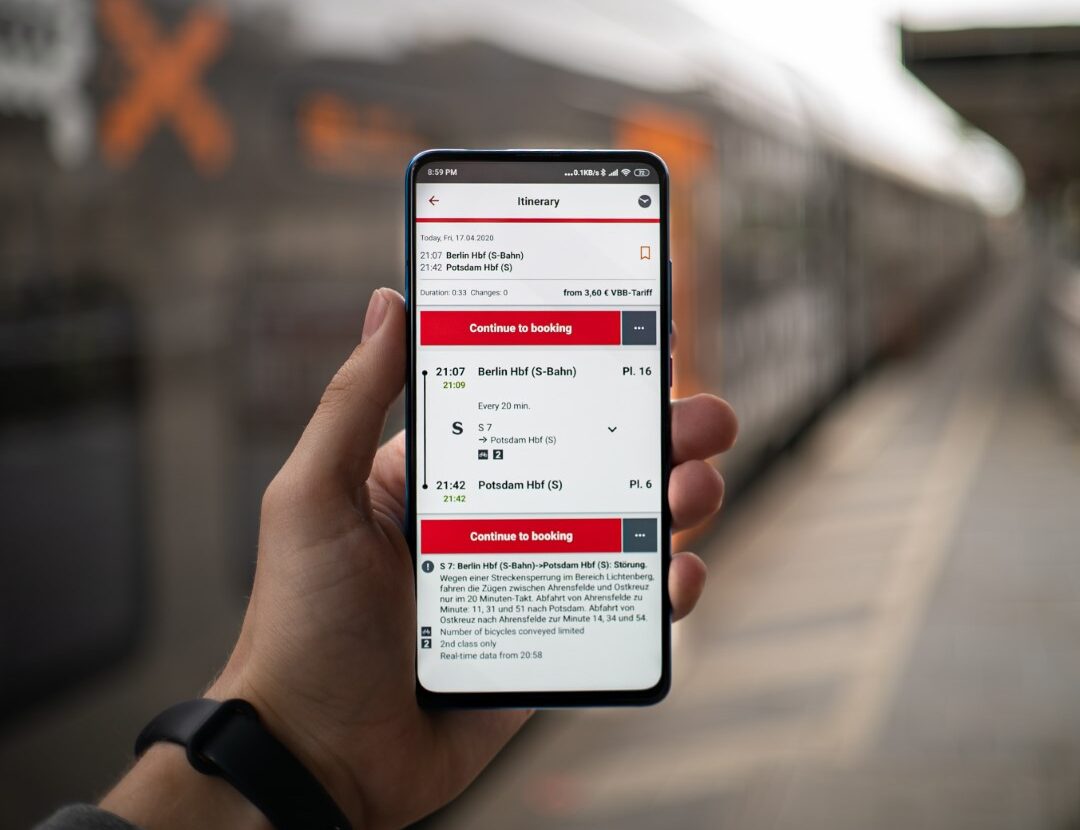
booking german trains
Ok, so now that you know exactly what ticket you need to purchase, you need to know HOW to buy a train ticket in Germany. booking German trains is actually pretty straightforward once you know exactly what ticket you’ll be needing. Here are the three main ways to book a Deutsche Bahn train ticket.
- Online: If you are booking the Germany Pass or a Single Ticket, then this is probably your best option. Simply go to Bahn.com and it is pretty straight forward.
Click Here for Booking Single and/or Return Journeys
Click Here If Needing the Germany Rail Pass
Click Here if buying a Land Regional Ticket - In the App: Once you have the APP (“DB Navigator”) installed, it’s a very user friendly App. I like this option because all your tickets are saved conveniently in the App for easy use on the trains. The App also gives you up to date timetables and also helps navigate the local (cities) public transportation as well.
Note: I have yet to figure out how to buy the German Rail Pass on the App - Buy Them At A German Train Station: Larger stations often have an actual ticketing office, which is nice if you have questions (but will cost about 2-3 extra Euros for in person booking services). At all the train stations, you’ll also find kiosks on the platforms. You can choose English on them that way you can easily navigate to what you need.
Can You Buy Tickets on The Train In Germany
Yes and No.
If you are traveling on Long Distance (ICE, IC) trains, then technically you can, but they are going to be quite expensive. You’ll need to find a conductor (either standing on the platform or walk around until you find one on board) to request a ticket. There is also a chance that there won’t be seats available if you attempt this method.
If you are traveling on a Regional Ticket or on local transport then you must have a ticket pre-purchased. Not having a ticket will cost you a high fine for “Black Riding” the train.
Other Places For Booking German Trains
Omio
Omio has recently become a favorite booking tool of mine. It’s a really easy to use interface, is great when booking trains that cross borders (it can get really confusing using all the different country’s train systems when figuring out trips like a Munich to Prague train or Berlin to Paris train. Omio is kind of like the Expedia of train tickets, where it finds the best ticket options for you to then choose from.
Click Here To See What Omio Prices Look Like
What are German Trains Like?
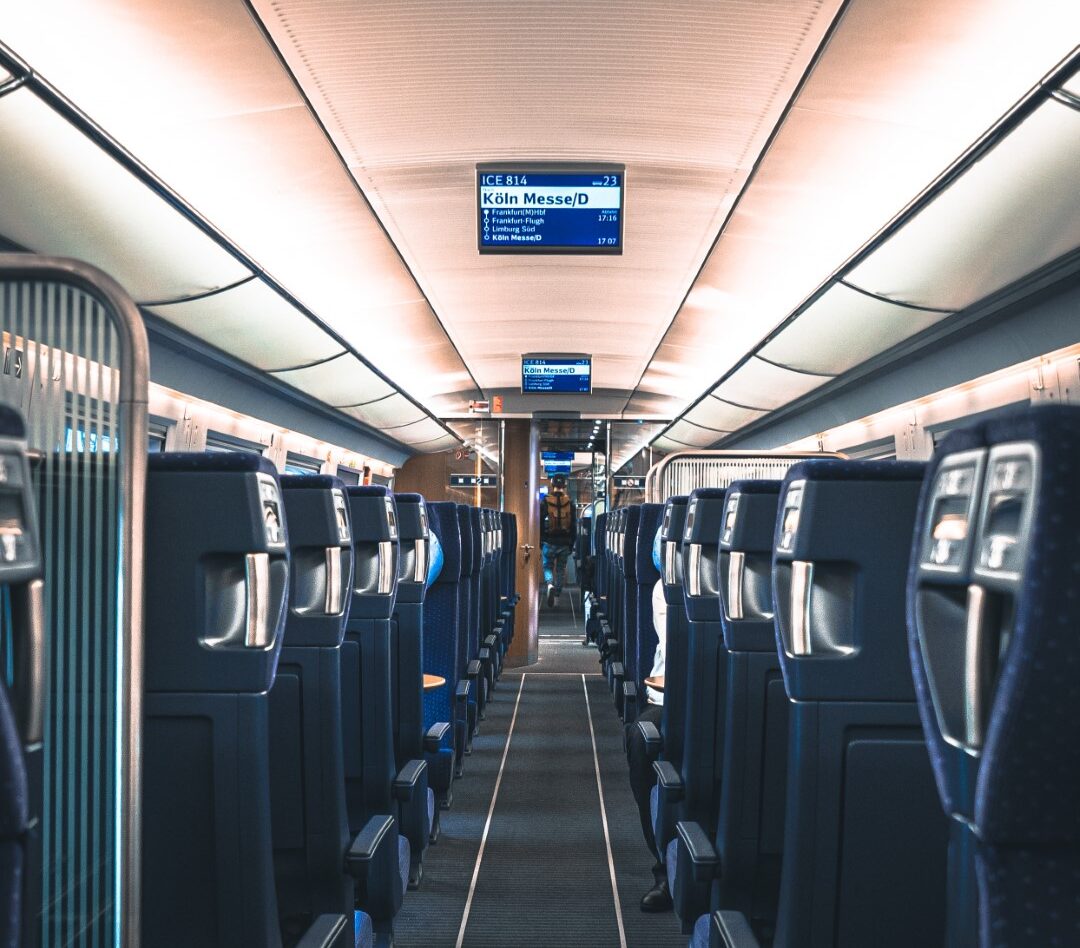
The German train system is phenomenal. You can see just how extensive it is in this Germany Train Map.
I’ve always found German trains to be extremely reliable (Germans often complain that they are often late or not on time….but there’s a joke in Germany that if you are not 10 minutes early then you are late. So, what a German considers “not on time” doesn’t always line up with my own definition.)
Due to the great train system in place, depending on the train you choose, they can be very fast getting you from one major city to another in just a matter of hours.
I also personally find the trains to be clean and comfortable and easy enough to use.
While you can’t always get to the most off the beaten path destinations, it is actually quite shocking just how far and what small towns a DB train will get you to. Depending on the origin and destination, a train ride may be faster (and even cheaper) than if you were to drive. It’s also the perfect alternative for travelers who may be a bit squeamish about driving in Germany.
FAQs about Germain Trains
Can you eat on German trains?
Yes, absolutely! Most ICE, IC, and EC trains will have some sort of food coach on board. On the shorter, regional trains, there are often workers who walk by with a cart selling small snack items (like chips) and beverages (coffee, beer, etc).
One of my favorite things to do is stop at a backerei (in bigger train stations, there are typically shops to pop into) and grab some delicious German foods like a Bretz’n, a salami baguette sandwich, a beer (or radler, for me!), etc to then enjoy it on the train trip.
Can you drink on German trains?
Yes. Food and drink are absolutely permissible on German trains. Just like with the food, you can purchase drinks on long distance trains and many RE trains as well. RB trains don’t always have someone selling items, since these journeys are much shorter.
And yes, this DOES include alcohol.
Tip: Stop at a store and grab a beer at the train station first, they are significantly cheaper than purchasing on board.
Are there bathrooms on German trains?
Yes. And surprisingly, these are typically decently clean, all things considered!
Do ICE trains have power outlets?
Yes. There are 220v Power Outlets on all ICE trains. (Bring a converter if you have 110v electronics). There is also WIFI on ICE trains as well.
Do trains run on Sunday in Germany?
Absolutely. Yes, many things in Germany are closed on Sundays, but the trains all run, regardless.
Is there WiFi on German trains?
DB has been working hard at getting WIFI on trains. As of right now, you should be able to get free WIFI on all ICE and IC trains. They are still currently working to expand the WIFI networks to the Regional and Local Trains.
Do they check tickets on German trains?
Not EVERY single train has a ticket checker on it. But, you don’t know when there will be one. They typically get on the train at a station and when they’ve checked the whole train, they get off at the next German train station and get on another train to start checking all of those tickets. I’ve been on journies where nobody has come for hours to check tickets and I’ve been on ones that had one stop where I get checked. Moral of the story? Always have your ticket purchased (and time-stamped, if need be)
Can I sit anywhere on a train?
It depends on the train. On all regional and local trains, there are no designated seats. However, on ICE and IC there may be. I go over that in the section below on “Reservations and Seats.”
What does HBF mean in German?
Hauptbahnhof. A Bahnhof is a “train station” and a Hauptbahnhof is a town’s “Main Train Station”
Can I take a bike on a German train?
Germans LOVE their bikes, so yes, you can bring your bike on. However, you’ll need to make sure you purchase a bike ticket with your main ticket.
- When booking, go to “Advanced search options” tick off the box for “Take a bicycle”
- If it is an ICE/ICE train, then the coach number that holds bikes will be on your ticket. If it is a Regional Train, you may have to look for the bike symbol on the train itself at the station.
- In addition to your train ticket, you’ll also get a bike ticket. You must attach this to your bike on the train
Will Deutsche Bahn Conductors Speak English
Maybe….maybe not. I always say that I never expect anyone to ever speak English in Germany. That being said, many people do and if the person checking your ticket doesn’t speak English and there is an issue, chances are, a friendly person nearby does that will step in to help.
Is it cheaper to buy train tickets in advance in Germany?
If you are booking a Land Ticket (IE: The Bayern Pass) you actually book this the day of your travel. You’ll get this on your App, online, or just get it at the station.
If you are booking a Saver or Flex Fare (for example, an ICE train), they are released 6 months in advance. Some people claim that they are cheapest around 3 months in advance, but this isn’t always true, depending on the route and availability.
If you are booking a German Rail Ticket, those are flat rate prices, so you can purchase at any time.
How fast do German ICE trains go?
ICE trains in Germany can get up to 300/kmh (186 mph).
Are S Bahn and U Bahn tickets the same?
No. the S-Bahn typically runs above ground (can run underground as well though) and the UBahn is like a subway. However, they almost always are covered on the same public transportation ticket for the city you are visiting.
Reservations and Finding Your Seat
Seat reservations are optional on all ICE and IC trains. Even if all seats are taken, you can still ride the train (standing). However, if you are going a long distance, I always find it worth it to just go ahead and reserve my ticket when booking. Sure, there are times when it wasn’t necessary, but for only a few extra Euros, I like to know that I have a place to call my own for a few hours.
On all Regional and Local Trains, seat reservations aren’t even possible, so you just have to find ones that are open. Rarely is it an issue finding seats on these trains, unless you hit one at high rush hour, or after a huge event (like Oktoberfest in Munich). Even then, just wait a few stops and it usually clears out.
Note: They are actually adding the feature to book seats on some regional trains now, but they aren’t for every journey. You can see if it’s an option when booking, and will only cost 1 Euro for a seat reservation.
Can I reserve a seat on a train after booking?
Yes. Seat reservations aren’t necessarily tied directly to your ticket and can be reserved separately. Back on the DB website, you can go back to the original search page where you put in your destination and click “Seat Reservation Only” and from there you can reserve your seat(s).
How do you know where to sit on a train/ How do you know if a seat is reserved on a train?
First, Find Your Platform
First, you’ll need to know what track (Gleis) your train will be on.
- You can see this number on your ticket or
- There are electronic boards in almost all the train stations, find the destination of your journey (or look for the train number that is on your ticket) and there will be a platform number
Second, Figure Out Your Wagon (Train Car)
On most Regional and Local Trains, you can sit anywhere you want except for the front car that says “1” (First Class), unless you have a first-class ticket, which pretty much nobody needs anyways on local trains.
For long journey (ICE/ IC) trains, if you have a printed ticket, it will say
Zug: Wagon: Sitzplatz:
In English, that is Train/ Car/ Seat and there will be a number after each. These numbers are what you will look for on the trains.
The Zug (Train) Number, will be the number on the front of the train (it often will also be on the sides of the train, and for older trains, there may be a paper in the windows as well)
Wagon: Each train car will have a number on it. Some trains are quite long but have short connections at the platform. I’ve made the mistake of just getting on the train and then wandering through each car until I found the right one, but that is a pain with luggage!
- Therefore, when you get to the platform, look up and you should see letters (A,B,C….).
- Next, look around for a sign board (Wagenreihungsplan) that has pictographs of the trains. On here, it will show exactly what letter of the platform you need to be on. So, if you are on Wagon 23, find this on the board and it will show what letter to be under when the train arrives
Third, Find Your Seat
Sitzplatz: Once you are on the correct wagon (train car) then you’ll need to find your seat. Look above by the luggage racks above the seats and you’ll see a number and your journey that you’ve reserved the seats for. For example, it would say “NUR-FRA” if you have the seats reserved from Nuremberg to Frankfurt.
If there is nothing lit up and written, it’s pretty safe that you can sit there and that the seat is not reserved. You can also sit in the seat before or after that portion of the reserved ticket.
In 6 Person Compartment Cars: If you are booked in a 6 person compartment within the train car, then the reservations will typically be on the door to these little “rooms”
Tip: You may see “ggf. reserviert” and that basically means that a seat MAY be reserved….therefore just sit somewhere else just in case.
Let’s look at the below example train tickets in Germany.
The top portion is your actual ticket. Highlighted is the information that you’ll need if you reserved your seats.
Track: You’ll see I’ve highlighted that this train departs on Gleis (track/platform) 22
Reservation: Under Product/ Reservierung you can see that:
- Train Number: This train will be on the ICE Train 827 and that we have 4 seats (Sitzplatz) reserved.
- Wagon/ Coach Number: The seats we reserved will be on Wagon 23
- Seats: (PL.) Our seat numbers are 42, 44, 46, 48 (2 Fenster means two seats by the window and 2 Gang. means 2 seats on the aisle). It is in the “Grossraum” meaning it is not in a private or 6 person compartment
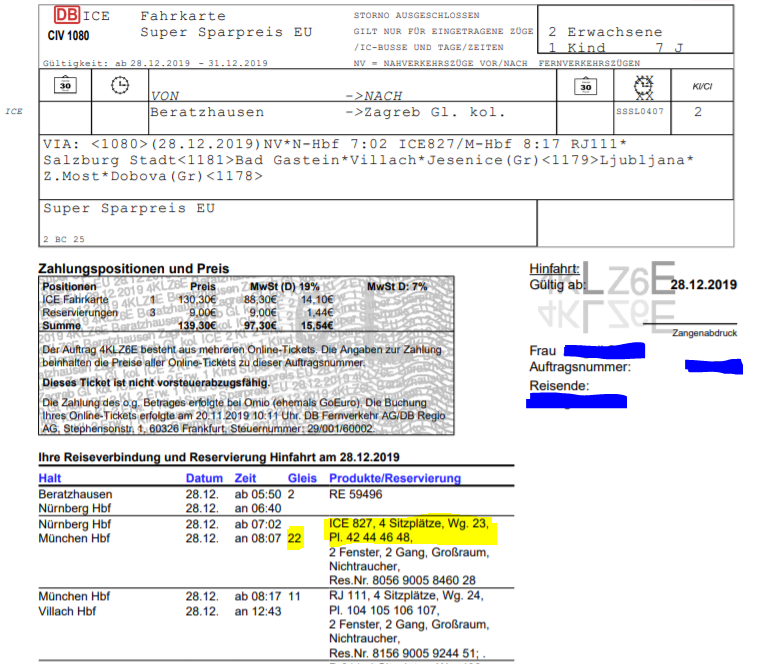
Where To Store Luggage
On the ICE/IC trains there are often small overhead luggage racks for hand bags. At the ends of the individual cars, there are metal racks that you can stack your big luggage onto. Feel free to put it on top of other bags. If this area is full, look in the connecting cars (often by the bathroom), as there is sometimes extra baggage room out there, but then you can’t keep an eye on it, not that I have ever had an issue with safety.
Traveling With Children on the German Trains
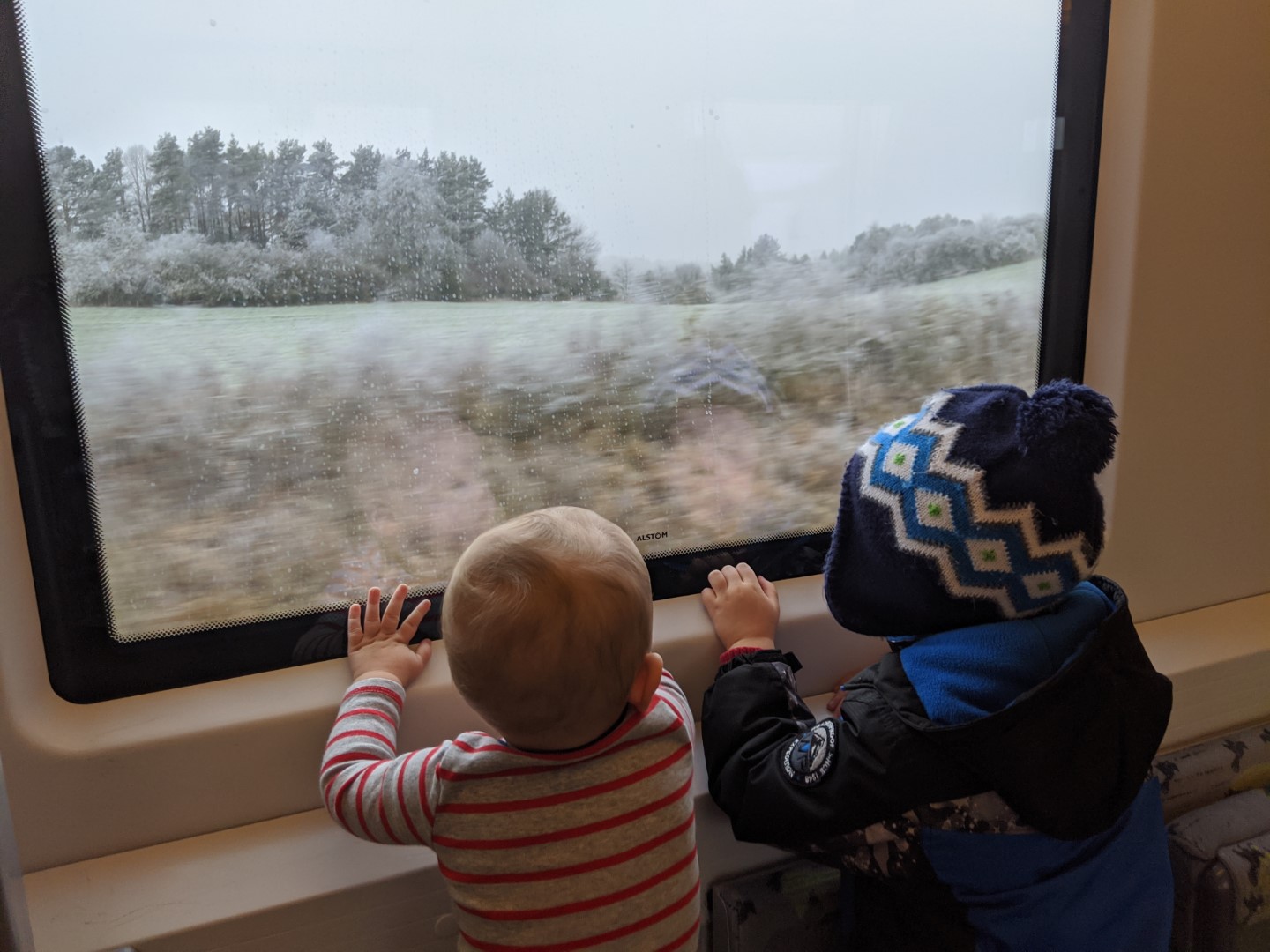
Since we travel in Germany with kids, we love taking the trains. But just as importantly, THEY love taking the trains! They don’t have to be strapped into their car seats for hours on end and what kid doesn’t just love trains in general?
I have a whole article on German Trains with Kids that has a bunch of information on how to book, tips for traveling with kids via trains, ways to save, and more. A few things to know in general though:
- Children under 5 are always free (but still need their information on your booking- details on how to do this in the DB Kids article). Kids up to 14 are free unless it is on a Land Ticket (like the Bayern Pass)
- You can make family reservations (with up to 5 people) which gives you a slight discount on the reservations. If you have more than 5 people, inquire about the DB Family Card. In order to do both of these though, you need to contact Deutsche Bahn for booking.
- Book the Family Compartments on long journeys. There are specific cabins that are especially for families, but they need to be booked early.
- Some ICE trains have childcare!
One way to save on family train travel in Germany is to look into the Land Tickets as well as the Day Land Ticket.
- Land Ticket: Travel up to 5 people in one particular state on a group ticket (see above)
- Day Land Ticket: Travel anywhere in Germany for up to 5 people for 70 Euro- the only downside is this is just for regional trains, so it could take you much longer than booking the more expensive tickets on the ICE trains.
Get Details on All the Above Points in my Deutsche Bahn With Kids Article
Tips For Taking the Deutsche Bahn
- Arrive early. This way you can ensure you know just which platform and area to be at without stressing
- Be Patient. If you arrive early to a platform and it doesn’t have your train up on the boards yet, be patient and it should show no less than 5 minutes before your train arrives
- Be Flexible. With that being said, platforms can change. Therefore, keep a frequent eye on the boards in case you need to make a last minute change
- Don’t Be Afraid to Ask For Help. Most platform attendants speak basic English and chances are good that someone nearby will as well. Don’t hesitate to ask “Sprechen Sie English?” to both DB workers as well as other travelers if you are confused about anything. If you want to double-check that you are, in fact, waiting at the right platform for the right destination or aren’t sure about which cabin to board, I promise, people are very nice and helpful (even if they look stoic and serious!) in Germany.
- Bring Your Own Food/Drinks On Board. As mentioned earlier, grab some food at the HBF, which is typically going to be better and cheaper than buying on board.
- Be Quiet! Germans are very quiet people. You can almost always quickly spot the Americans, not from looks, but because you can clearly hear them! Talk in quiet voices on all the trains. If you have kids, have stuff to keep them busy so they are not loud as well.
- Wear Your Running Shoes. This is kind of a joke….kind of. While I said that most trains are on time, it will occasionally happen that there are delays or just that you have a tight connection to begin with. I have been seen many-a-times to be running through the German train station to get to my next train on time!
- Choose Your Luggage Wisely. I’m a big believer in backpacks for all travel in general, but I know not everyone else can get on board with that. However, if you are planning on doing a lot of train travel, strongly consider the type of bag you will have for numerous reasons. First, it is hard to wheel a huge suitcase through the train aisles. Second, not all train stations have elevators. Therefore, you may be staring at a lot of stairs to lug that luggage up and down on!
Deutsche Bahn Lost and Found
In case you lose something while on the train, there is a lost and found, but it is a bit of a hassle. They will only look for your item for up to 4 weeks and only if it was less than a 15 Euro Value item.
- First, you need to report your item ASAP. However, if it is less than a 15 Euro value, they won’t even document it. To report a lost item you can:
– Call +49 30 586 020 909 to report it
– Go into larger stations that have DB offices
– Go to Bahn.de>Services> Reporting a Loss - If your item is found, you will have to pay a 5 Euro Handling Fee or a 20-35 Euro Postage Fee to ship to you
Common Abbreviations and Phrases You Should Know
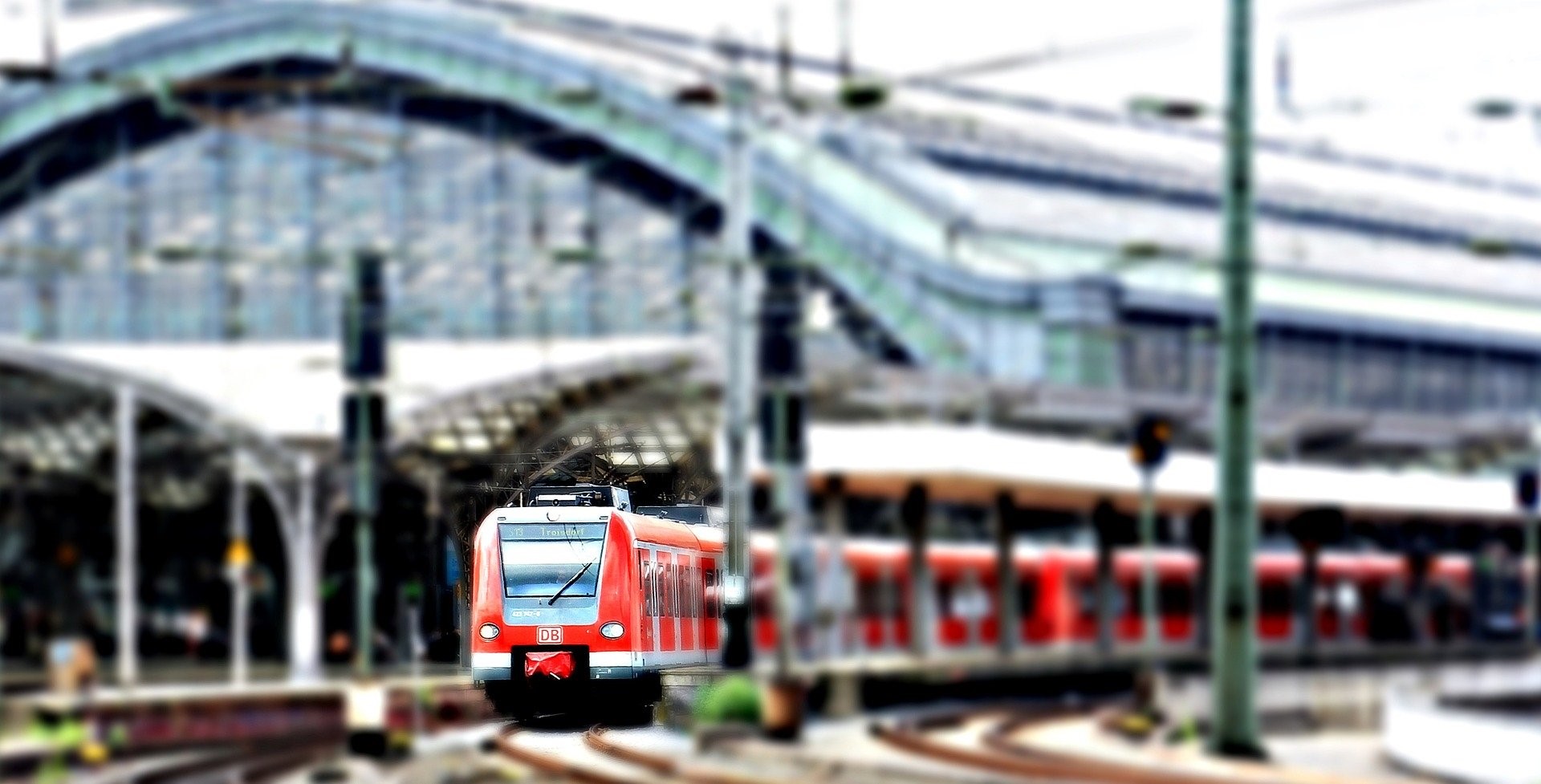
Bahnhof: This just simply means “Train Station”
HBF: Hauptbahnhof. This is the “Main Train Station” Most big cities will have a “HBF” and some will even have smaller stations, for example, if coming into Regensburg, there may be a stop at Regensburg Pruffening as well as Regensburg HBF, so you’ll want to pay attention
Fahrkarte: Ticket
Gleis: Track. You may see “Gl” on your ticket
Bahnsteig: Platform
Reserviert: Reserved
Schlafwagen: Sleeping Car
Einsteigen: Kind of like when you were a kid and would yell “All Aboard!!!” But it literally means “Enter.” So you might hear something like, “Bitte Einstigen” (Please enter)
Nacshte Halt: The next stop is….
Im Fahr Richtung: You most likely will hear something like “Im Fahr Richtung on Links” and that means that the door on the left will be the one to open for departure.





